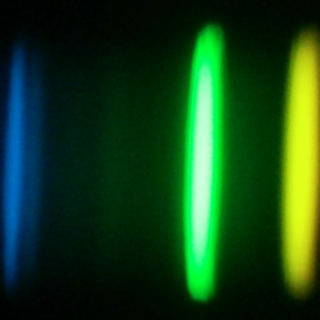Bibcode
Arentsen, Anke; Aguado, David S.; Sestito, Federico; González Hernández, Jonay I.; Martin, Nicolas F.; Starkenburg, Else; Jablonka, Pascale; Yuan, Zhen
Bibliographical reference
Monthly Notices of the Royal Astronomical Society
Advertised on:
3
2023
Citations
8
Refereed citations
8
Description
Ultra-metal-poor stars ($\rm {[Fe/H]} \lt -4.0$) are very rare, and finding them is a challenging task. Both narrow-band photometry and low-resolution spectroscopy have been useful tools for identifying candidates, and in this work, we combine both approaches. We cross-matched metallicity-sensitive photometry from the Pristine survey with the low-resolution spectroscopic Large Sky Area Multi-Object Fibre Spectroscopic Telescope (LAMOST) data base, and re-analysed all LAMOST spectra with $\rm {[Fe/H]} _{\rm Pristine} \lt -2.5$. We find that ~1/3rd of this sample (selected without $\rm {[Fe/H]} _{\rm Pristine}$ quality cuts) also have spectroscopic $\rm {[Fe/H]} \lt -2.5$. From this sample, containing many low signal-to-noise ratio (S/N) spectra, we selected 11 stars potentially having $\rm {[Fe/H]} \lt -4.0$ or $\rm {[Fe/H]} \lt -3.0$ with very high carbon abundances, and we performed higher S/N medium-resolution spectroscopic follow-up with the Optical System for Imaging and low Resolution Integrated Spectroscopy (OSIRIS) on the 10.4-m Gran Telescopio Canarias (GTC). We confirm their extremely low metallicities, with a mean of $\rm {[Fe/H]} = -3.4$, and the most metal-poor star having $\rm {[Fe/H]} = -3.8$. Three of these are clearly carbon-enhanced metal-poor (CEMP) stars with $+1.65 \lt \rm {[C/Fe]} \lt +2.45$. The two most carbon-rich stars are either among the most metal-poor CEMP-s stars or the most carbon-rich CEMP-no stars known, the third is likely a CEMP-no star. We derived orbital properties for the OSIRIS sample and find that only one of our targets can be confidently associated with known substructures/accretion events, and that three out of four inner halo stars have prograde orbits. Large spectroscopic surveys may contain many hidden extremely and ultra-metal-poor stars, and adding additional information from e.g. photometry as in this work can uncover them more efficiently and confidently.
Related projects

Chemical Abundances in Stars
Stellar spectroscopy allows us to determine the properties and chemical compositions of stars. From this information for stars of different ages in the Milky Way, it is possible to reconstruct the chemical evolution of the Galaxy, as well as the origin of the elements heavier than boron, created mainly in stellar interiors. It is also possible to
Carlos
Allende Prieto